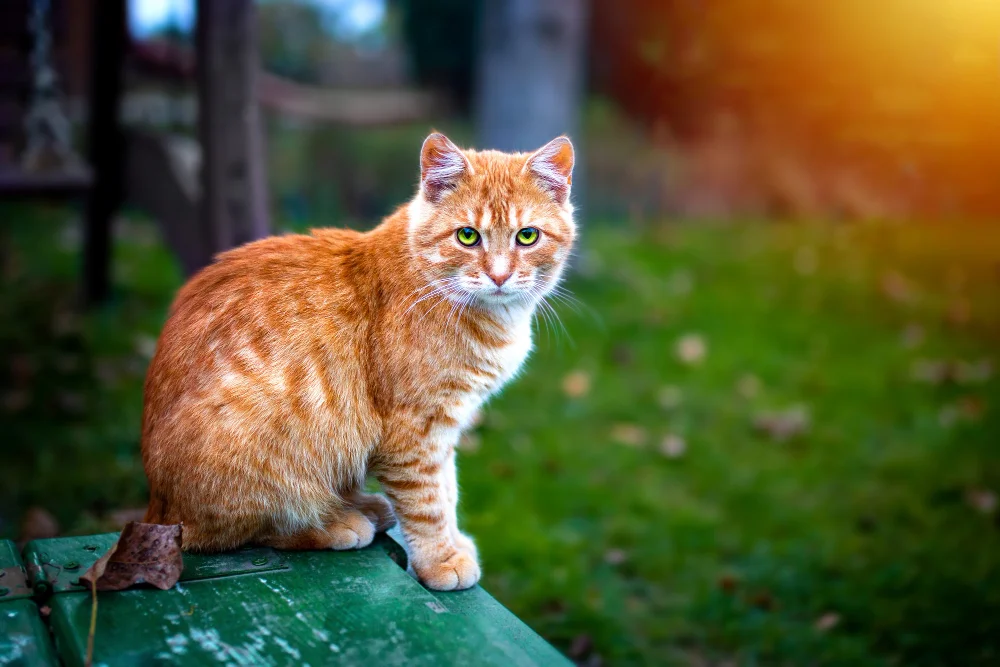Last year, I adopted an orange tabby named Marmalade, expecting a calm lap cat to keep me company during quiet evenings. What I got instead was a zooming, curtain-scaling, food-stealing whirlwind who somehow managed to charm every visitor with his cheeky antics. I couldn’t help but wonder: Why are orange cats so crazy? Is it just a coincidence, or is there something more going on?
As it turns out, I wasn’t the only one asking this question. Across TikTok, Reddit, and vet offices worldwide, orange cats have earned a reputation for being endearingly chaotic. But where does this perception come from? Let’s dive into the feline madness.
The Reputation of Orange Cats: Clown or Cat?
From Garfield’s lasagne-stealing laziness to TikTok’s compilation of ginger cats knocking over plants for no reason, orange cats have built a reputation that feels oddly consistent.
According to Dr. Lauren Finka, a feline behaviour expert at Nottingham Trent University, there’s growing curiosity about whether cat coat colour has any link to temperament. While the science isn’t entirely conclusive, emerging theories and anecdotal evidence are too compelling to ignore.
Genetics and Behaviour: Is There a Connection?
Orange cats are almost always male (around 80%) due to the way the orange gene (on the X chromosome) works. Males only need one copy to express the trait, while females need two. This male-dominance in the orange cat population might be key.
Male cats, particularly if unneutered, are often more territorial, vocal, and adventurous. Even when neutered, these behaviours can linger subtly. According to a 2020 study published in the journal Applied Animal Behaviour Science, male cats were generally more social and bold than their female counterparts.
So, when you combine a largely male population with bold temperaments, a bit of feline testosterone, and a dash of mischief—you get Marmalade climbing the fridge at 3 a.m.
Social Butterflies or Attention Seekers?
Another theory? Orange cats might simply crave more human interaction.
Dr. Mikel Delgado, a certified cat behaviour consultant and researcher at UC Davis, explains that coat colour doesn’t directly influence personality—but genetics and early environment do. Since many orange cats are bred or rescued in social environments, they often grow up comfortable with humans.
This can manifest as clinginess, loud meowing (often called the ‘ginger yell’), and following you from room to room like a fuzzy stalker.
Real-world example: My friend Rhea’s orange cat, Simba, refuses to eat unless someone sits next to him. It’s either companionship or a hunger strike.
The Role of Confirmation Bias (a.k.a. We Notice What We Expect)
It’s worth noting that orange cats may not actually be crazier—but we’re more likely to remember their chaotic moments.
Psychologist Dr. Susan Hazel from the University of Adelaide reminds us that once a stereotype is formed—like ginger cats being “mad”—we subconsciously look for evidence that confirms it.
That viral video of a ginger cat fighting its reflection? Reinforces the stereotype. The same behaviour from a grey tabby might get a pass.
Nutritional and Health Factors
Interestingly, orange cats might appear “crazier” due to underlying health quirks that affect energy levels or mood.
For example:
- Diet imbalances: Too many carbs or low-quality kibble can lead to hyperactive behaviour.
- Lack of stimulation: Without toys, climbing trees, or interaction, high-energy cats (often orange ones) might find their own form of entertainment—like unrolling your entire toilet paper roll.
As Dr. Rachel Geller, a certified cat behaviourist, advises: “Cats with excess energy need mental and physical enrichment. Without it, they’ll create their own fun—and it’s usually chaos.”
Personality vs. Colour: What Really Matters
At the end of the day, not all orange cats are wild—just like not all Siamese cats are chatty. But orange cats often feel more extroverted, which might be why their antics stand out.
When choosing a feline companion, it’s more important to consider their upbringing, socialisation, and individual personality than their coat colour alone.
That said, if you do adopt a ginger furball, maybe hide the breakables.
Tips for Living with Your Orange Chaos Goblin
If you’re already living with one of these lovable lunatics, here are a few tips to survive—and thrive:
1. Invest in Vertical Space
Cat trees, shelves, and window perches give them an outlet for that wild climbing urge.
2. Routine Play Sessions
Daily play with interactive toys (like feather wands or laser pointers) burns off that ginger energy.
3. Food Puzzles and Slow Feeders
These keep them mentally stimulated and slow down their mealtime mania.
4. Positive Reinforcement
Reward calm behaviours with treats. Avoid punishment—it usually backfires with bold personalities.
5. Give Them Company
If they’re social, they might benefit from a feline friend—or at least, more interaction with you.
FAQs:
Are orange cats more hyper than other cats?
They can appear more hyper due to their bold personalities and sociability—especially since many are male.
Is it true most orange cats are male?
Yes. About 80% of orange cats are male due to how coat colour genes are inherited.
Do orange cats have health problems?
Not specifically due to colour, but like any breed, they need balanced diets, exercise, and vet care.
Are there calm orange cats?
Absolutely! Many are cuddly, relaxed lap cats. Personality varies individually.
Final Thoughts: More Than Just a Meme
Orange cats aren’t crazy—they’re charismatic, bold, and occasionally exhausting. But that’s what makes them memorable. Whether it’s nature, nurture, or a mix of both, they’ve certainly earned their place in internet legend and our hearts.
So the next time your ginger companion attempts to climb your bookshelves at midnight, just remember—you’re not alone.
Have an orange cat? Share your funniest (or most chaotic) moment in the comments below—I’d love to hear your stories.
Read Also: What If Mondays Were Banned?




